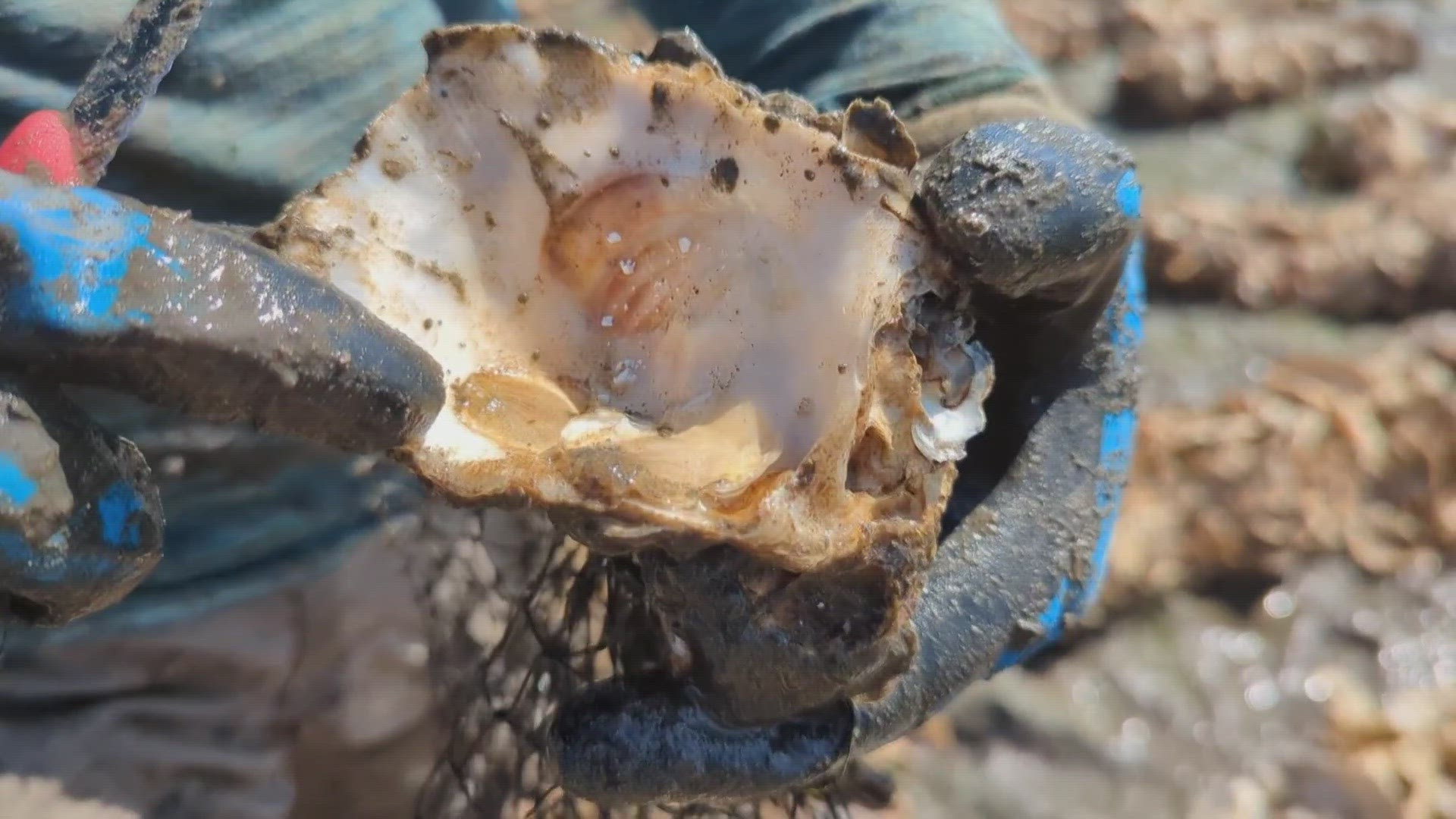Work is underway to restore Olympia oyster populations in Samish Bay -- returning a native species to the area and potentially reaping benefits such as cleaner water quality and improved habitat.
The Puget Sound Restoration Fund is working with partners including tribes, shellfish growers, government agencies and others on a number of projects across the state. They collect Olympia oysters from nearby habitats, induce spawning, rear the resulting larvae and pump them into tanks filled with bags of Pacific oyster shells. Those are then introduced into habitats, such as the tide flats at Samish Bay.
Tuesday, volunteers from Amazon joined PSRF to get hands-on experience with the work. Amazon donated $200,000 toward the project to help PSRF plant more than 3 million oyster seeds in Samish Bay. It expects that with an average 20% survival rate, the work could result in up to around 600,000 oysters.
Laura Bowen Wegener was among those volunteers -- her second year with the project.
"It gave me a really good appreciation for the work that goes on at PSRF, taking a species that once was prolific here and trying to re-nourish that and ensure that the native population can come back and thrive," Bowen Wegener said. "It's certainly a physical challenge to do it and we're grateful for PSRF for all of their work in order to ensure the Olympia oyster is around."
PSRF Deputy Director Jodie Toft says Olympia oysters were once plentiful at Samish Bay, but farming and pollution reduced their numbers significantly.
"They're a small but mighty part of the marine ecosystem, along the whole west coast they are our only native oyster which a lot of people don't know," Toft said. "They're filtering water, two gallons a day or so once they get to be an adult-sized oyster, so they're feeding out some of that excess phytoplankton, those excess nutrients in the water, creating better space for eelgrass, and providing a lot of habitat for prey for salmon."
To learn more about the work underway by PSRF, click here.

